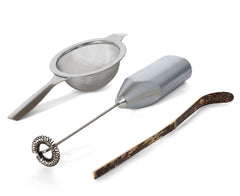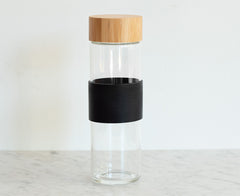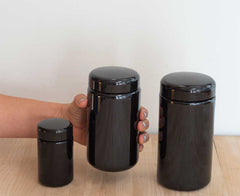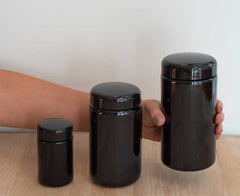I grew up with Red Rose tea bags, a blend of black and orange pekoe teas. My mother liked to make a cup in the evenings, after dinner, and I felt sophisticated whenever I joined her for a cup. She bought the 100-bag box at our local grocery store, and couldn’t have (wouldn’t have) paid more than five dollars for it (and this was 1970s dollars). Pennies per bag was my frame.
Loose leaf tea wasn’t part of our reality in 1970s Pennsylvania; I wouldn’t experience those until I came to Berkeley for college. I lived off and adored Peet’s blends, many of which I still enjoy to this day (their Pumphrey’s Blend is especially tasty). Mostly I stuck to black teas, i.e. fully oxidized teas, preferring their familiarity and fully caffeinated punch. But I also tiptoed into the mystical-like worlds of oolong (partially oxidized teas) and green (unoxidized) teas, though I never felt like I understood them very well; in all likelihood I probably butchered them by treating them like black teas, with on-the-boil water and lengthy brewing times.
I didn’t dive into green teas until i moved to Japan, and even then it took awhile to appreciate the subtle charms of sencha and gyokuro, though the rustic pleasures of bancha and genmaicha had more immediate appeal. My first cup of matcha, in contrast, was like getting smacked on the shoulder, hard, by a sadistic monk. It tasted nothing like any tea I’d had. I remember the taste staying with me for what seemed like forever, probably the good part of an afternoon. It was like a grassy, meaty espresso made less bitter by the fancy sugar cube (this is basically how I think of wagashi, the artfully designed and colored sugar-dominated confection that came with it) traditionally served with the bowl of tea. The matcha was also somehow infused with the raw power of the zen monk who served it to me.
So I began buying supermarket matcha (Japanese supermarket matcha, that is) and attempted to make it at home the traditional way. It never tasted very good. In restrospect supermarket matcha is like supermarket anything — designed for economy and widest appeal–so I don’t know what I was expecting. My techniques for making it were uninformed, at best. So I gave up on it for a few years, concluding that I simply didn’t like it. When people tell me that they don’t care for matcha, I know exactly what they mean; I didn’t care for it, either.
But living in Kyoto meant that, inevitably, you’d get invited to formal tea ceremonies, and the matcha at those tasted better than what I made at home. It never dawned on me that quality actually mattered — matcha was matcha, wasn’t it?
Now while the ceremonial matcha was certainly a step up from supermarket matcha, it was still pretty bitter and somewhat challenging. I loved the idea of matcha, and certainly the surroundings in which it is ceremonially served, more than the matcha itself. The choreography of it all was interesting, to say the least. But from a purely epicurean standpoint: eh.
And then I went to yet another ceremony as a guest, but this one served some very tasty matcha indeed. I inquired about it, and tracked some down for home use. This was more like it.
Zen temples almost always have some matcha on hand, and if you ask politely and show some interest in zen, they’ll almost certainly serve you a cup. Some are ok, some are good, some are mind-bendingly good. It was the latter that “woke me up” to the fact that extraordinary matcha was indeed available, but you really had to dig to find it. This was pre-Internet, of course, but it’s still not easy to find great matcha in Japan that passes the five standards we set here:
1) maximum umami — it should just light up your mouth palate and brain with glutamates.
2) hallocinogenic green color — it should look almost fake, it’s so electric green.
3) utter lack of bitterness, robust acid structure — the sweetest matcha are so full of umami that bitterness plays no role; it’s all sweetness and light and enough acid to balance it all out.
4) long, long finish — it should continue to sing for a good 10 seconds, and often 20 or even 30, after it’s swallowed. Exactly like a world-class wine.
5) great crema — it should froth up into jillions of microbubbles that resemble espresso crema.
This stuff is a long way from Red Rose, and the journey took a while. People always say it’s about the journey, not the destination, and that’s true enough. But it’s ALWAYS a delight, and then some, when the journey ends up leading to such a wonderful place.




